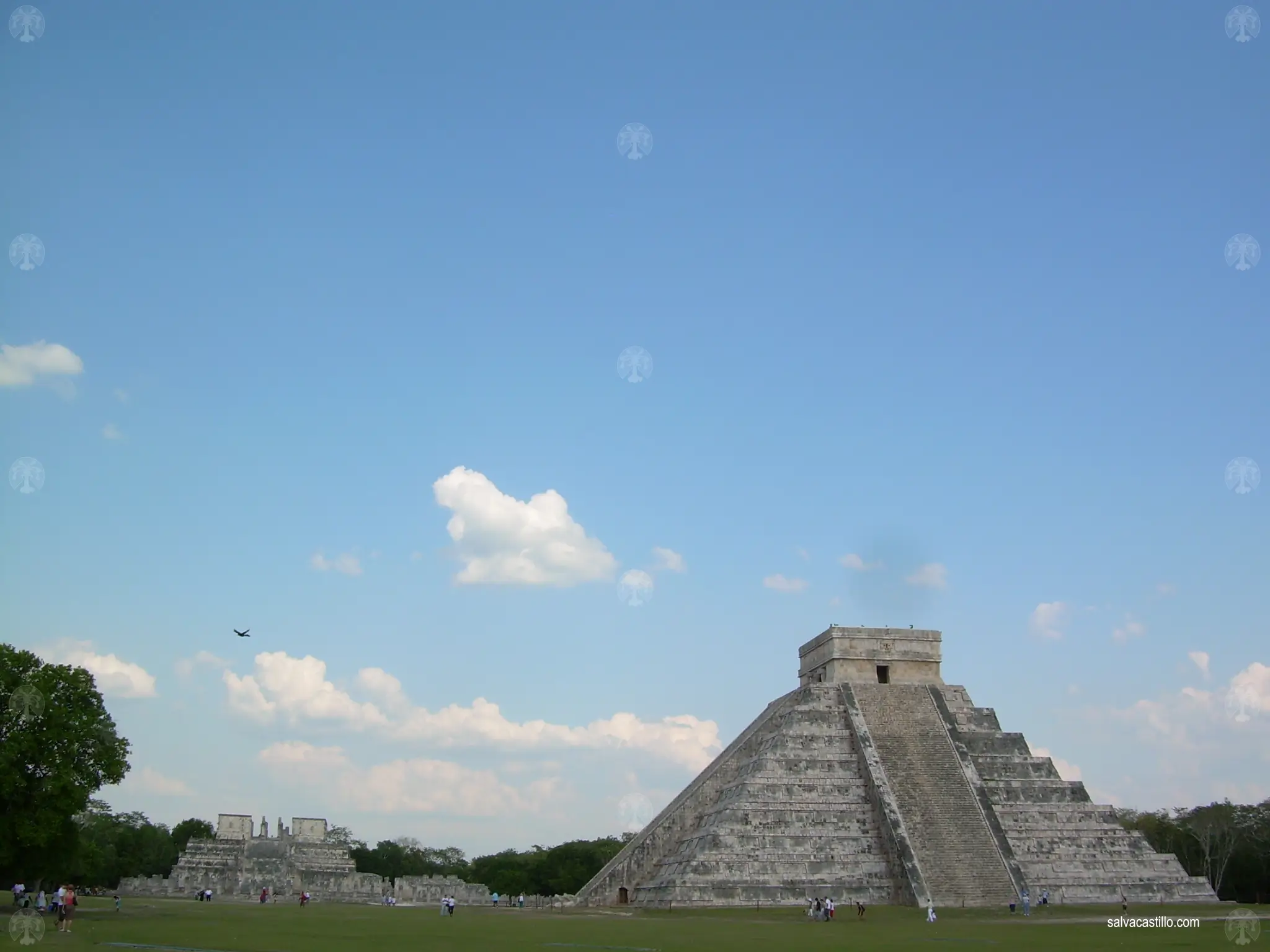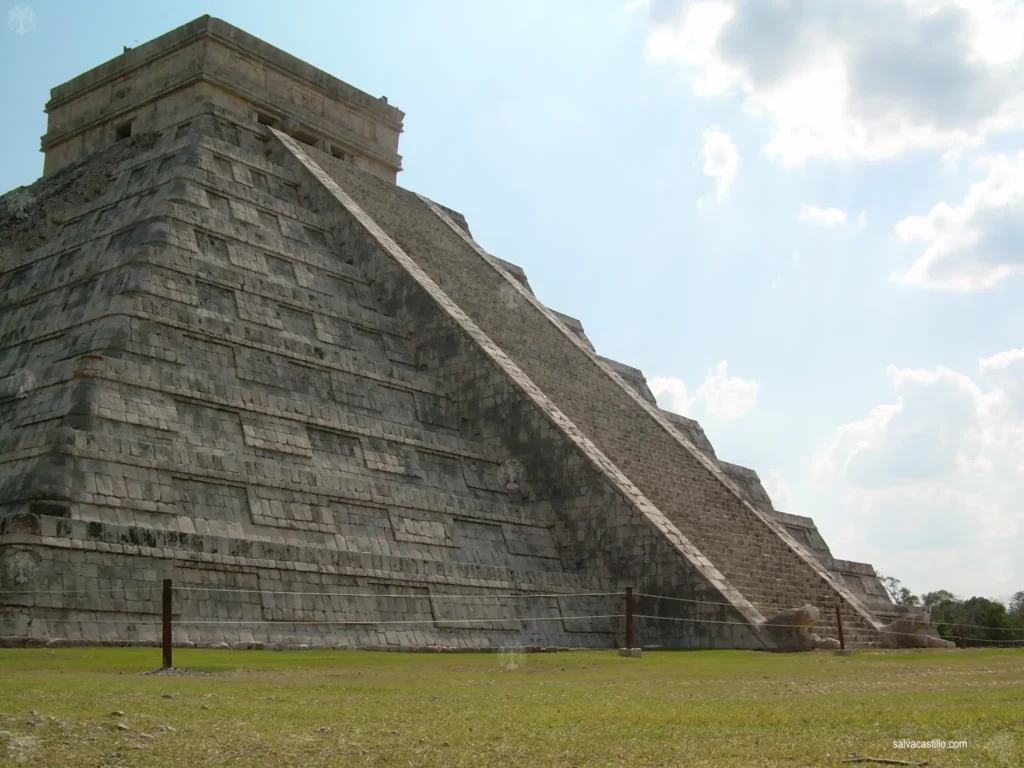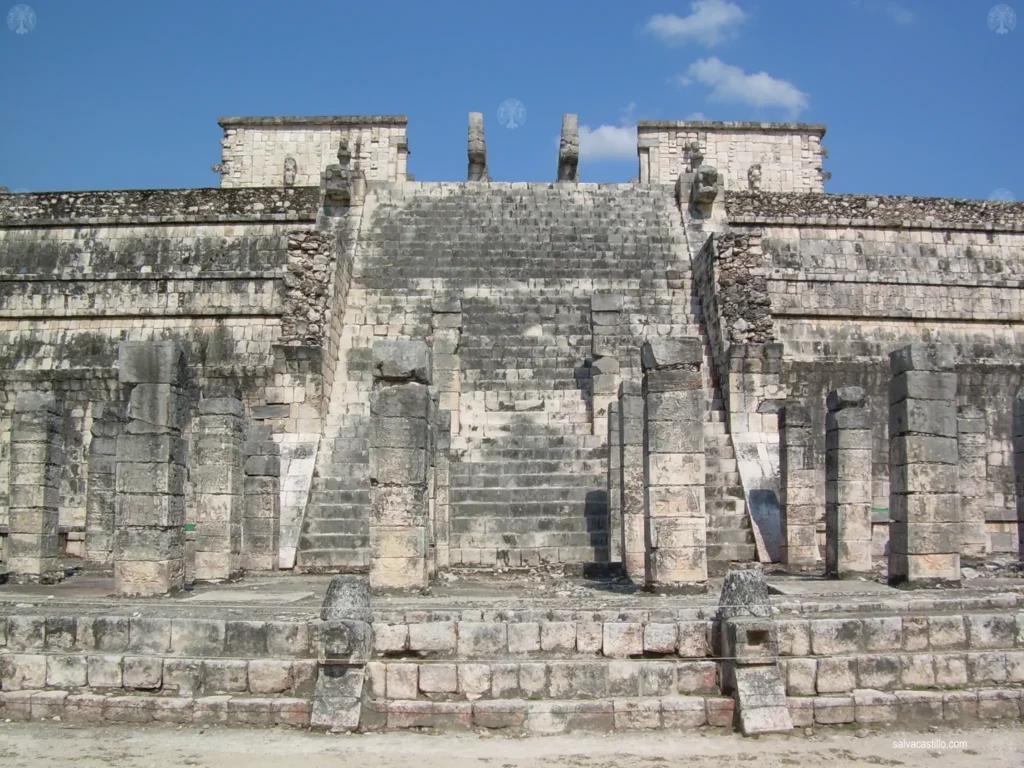Chichen Itza, a UNESCO World Heritage Site, is an archaeological complex in the Yucatan Peninsula, Mexico, that offers a fascinating window into the rich history of the Mayan civilization.

This site, which flourished between the 6th and 10th centuries A.D., presents a unique fusion of architectural styles that illustrate the diverse influences that converged in this prominent city.

Temple of Kukulcán
At the epicenter of the site is the pyramid of Kukulcán, an imposing structure that served as a temple and astronomical observatory, with 91 steps on each of its four faces, totaling 365, symbolizing the days of the year.



Great ball court
The Chichén Itzá ball game is another testimony to the cultural and sporting complexity of the Maya. It was held in a rectangular field that is impressive for its monumentality and the ceremonial implications it housed. The structure consists of two parallel walls with rings at different heights at each end, challenging participants to achieve precision in throwing a rubber ball, without using hands or feet, through these elevated hoops.

The Ball Game at Chichén Itzá was not simply a sport, but a sacred ritual with cosmic implications. The competition was imbued with religious and mythological symbolism, representing the eternal confrontation between celestial and subterranean forces. The very structure of the field, with its marked dimensions and astronomical alignments, reflects the Maya cosmovision, where the game was intertwined with the observation of the cosmos and the ritual cycle of the universe.

The Ball Game experience went beyond athletic competition; it implied a transcendental meaning. The ball, made of rubber and with a considerable weight, added a challenging element to the competition, highlighting the athletic ability of the participants. The staging of the game and the associated rituals not only entertained the population, but also fulfilled a social and ceremonial function, reinforcing the cohesion of the community and its connection with the divine.

Temple of the warriors
The Temple of the Warriors at Chichén Itzá emerges as a sublime monument, attesting to the architectural mastery of the Maya civilization. Located in the Great Plaza, this ceremonial complex stands out for its imposing structure, composed of four staggered terraces that culminate in a main temple. The temple’s façade is decorated with intricate columns and sculptures depicting warriors and dignitaries, providing a detailed view of the Maya military and social elite.

The Temple of the Warriors is a symbol of military and political influence in Maya society. The sculpted images of warriors, eagles and jaguars testify to the connection between the military and the divine. In addition, the presence of chac-mools and sacrificial altars reveals the ceremonial function of this complex.
One thousand columns
The Square of One Thousand Columns, which precedes the Temple of the Warriors, is an extensive esplanade flanked by square columns, each adorned with sculptural reliefs.

These columns, which originally supported a roof, form an impressive architectural landscape that suggests the ceremonial magnificence that characterized Chichén Itzá. Between the columns are altars and sculptures that highlight the importance of this space as the epicenter of rituals and ceremonial events.

El Caracol Astronomical Observatory
The Astronomical Observatory of Chichén Itzá, known as El Caracol (“the snail”) for the spiral staircase in its upper tower, represents an outstanding achievement in science and astronomical observation of the Maya civilization. This exceptional building, located on the southern platform of Chichén Itzá, stands out for its unique design and precise alignment with celestial phenomena. The Caracol consists of several structures, including a cylindrical tower containing small windows strategically placed to allow observation of the night sky.

The architectural features of the Astronomical Observatory suggest a deep understanding by the Maya of celestial movements. The openings in the tower are carefully aligned with key astronomical events, such as the solstices and equinoxes, evidencing the Maya’s ability to accurately predict celestial events. The specific inclination of the openings and their relationship to certain cardinal points suggest an intimate connection between El Caracol’s architecture and Maya cosmology.

Sacred Cenote
The Sacred Cenote of Chichén Itzá, a spectacular freshwater cenote in the Yucatán peninsula, is a natural wonder that transcends its scenic beauty to play an essential role in the spirituality of the Maya civilization. This sinkhole, circular in shape and surrounded by high cliffs, was considered a sacred place where the Maya performed ceremonial rituals and deposited offerings. Archaeological excavations have revealed precious artifacts and human remains submerged in its depths, evidence of the cenote’s ritual importance. It is believed that the offerings, which include jade objects, ceramics and human bones, were a tribute to the aquatic deities and also served a purification purpose in Maya religious ceremonies.
